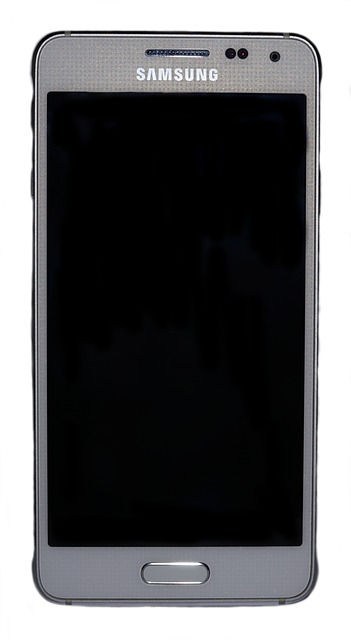Chromebooks come in all shapes and sizes. Some premium Chromebooks have specs and performance that can rival the best of the Windows and macOS powered competition. Others live at the lower end of the spectrum, providing a solid experience using lower specs and a lower cost. Samsung’s latest, the Galaxy Chromebook Go.
Samsung Galaxy Chromebook Go.
Ewan Spence
One quick note… Don’t confuse the Galaxy Chromebook Go with the Galaxy Book Go – the former is clearly using Google’s OS, while the latter is an ARM-powered Windows laptop.
The most important word to understand here is “Go”. Samsung is using this in the Microsoft sense – see the Surface Go series, which is typically the better value pricing experience of the Surface Pro or Surface Laptop – rather than the Google sense – see the Pixelbook Go, which turns the specs up significantly without being overblown.
If there’s such a thing as a “straightforward” Chromebook, then Samsung is hoping that the Galaxy Chromebook Go is it. And it’s mostly managed to reach that goal, but mostly in this case is not enough.
Samsung Galaxy Chromebook Go.
Ewan Spence
The Galaxy Chromebook Go is powered by Celeron processor running at 1.1 GHz, which can turbo up to 2.8 GHz when needed. That’s backed up by 4 GB of RAM, and either 32 GB or 64 GB of storage. If you’re planning to install and run Android apps, you’re probably best to go for the larger storage; the more traditional Chromebook usage patterns will run happily under 32 GB.
Given Samsung is pushing the Go as a low-end Chromebook, these specs are on a par with the competition. By going with 4 GB of RAM, web browsing, social media, and video streaming all run comfortably with no issues. The same goes for most lightweight web services and cloud apps, but if you start to push the envelope it’s going to get ragged. Stay within the Google Apps and you’re naturally good to go.
Samsung Galaxy Chromebook Go.
Ewan Spence
When closed the Chromebook Go has a very nice sandwich design, with the sliver top and bottom cases contrasting with the black screen surround and black keyboard tray. The black is also indented by a millimetre, making the opening of the laptop very easy.
The screen itself will fold back through 180 degrees to lie flat. One you move the screen beyond 90 degrees, the laptop ends up resting on the back edge of the display panel. This is a curious piece of design; there are some small rubber bumps on the screen edge to act as feet, but I feel wary about what stress that is putting on the bottom edge of the display.
Samsung Galaxy Chromebook Go.
Ewan Spence
I found the keyboard to be the most enjoyable part of the package. While that might sound like faint praise, given the importance of the keyboard on any laptop, getting the balance right is a pre-requisite. There is a good amount of movement in the keys with solid bounce back. For the older owner such as myself with a long history of keyboards, this works.
I’m less sure how a generation brought up on glass tablets and smartphones with no little physical feedback, or super thin keyboards with minimal travel, will take to this. Is it too big and clunky for the teenage and college market that Samsung’s marketing suggests?
And can the keyboard quality make up for the other areas where it feels Samsung has made bigger compromises?
Samsung Galaxy Chromebook Go.
Ewan Spence
Which leads me to the Achilles’ heel of the ChromeBook Go. And it’s a big one… the display. There’s no touch here, and given the importance of touch in ChromeOS this reduces the functionality. With a resolution of 1366 x 768 pixels, the experience feels out of proportion. Small fonts are not especially small, and thanks to the lower pixels per inch you lose the smoothness that you may have in much more expensive laptops. Nothing feels cramped, but I never felt I had enough information on show.
The best way to describe the impact of the display when browsing is everything looks a little bit fuzzy at the edges. Not in an out-of-focus way, but with the individual pixels visible the fonts aren’t as sharp or as clear as I would like.
Samsung Galaxy Chromebook Go.
Ewan Spence
The screen is definitely the weakest point in the package. As with any hardware that is looking to reach a budget-friendly price point, decisions have to be made on which areas to compromise on, and which areas need to be prioritised. Given this is a fourteen inch laptop and how much the screen dominates the field of view when in use, the decisions around the display feel ill-judged.
In this part of the laptop market, Chromebooks are great choices for those looking to do browsing, a little bit of work in the cloud, social media, and streaming media. The Celeron processor is not a powerhouse, but it can cope with these demands, although maybe not all at once. The keyboard is solid in use, as is battery life.
As mentioned, Samsung is pushing the Chromebook Go to a younger audience… An audience that parents or budgets may not be willing to spend a significant amount on a laptop for their studies and work. And I totally get that. In the same breath, that this is a laptop where I think the decisions made to get to the price point seem off to me. I personally would have preferred a smaller screen than the 14 inch IPS display, and a bump up in resolution to at least 1080p.
I don’t think Samsung is offering enough here. If you’ll pardon the pun, it’s hard to look past the display in a late 2021 laptop.
Now read about the latest smartphone detas, as more details emerge about Samsung’s upcoming Galaxy S22 Ultra…

